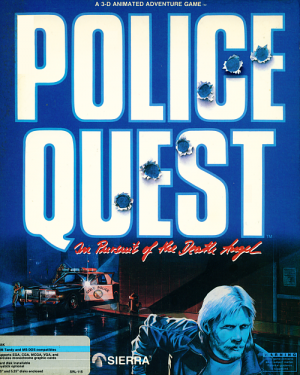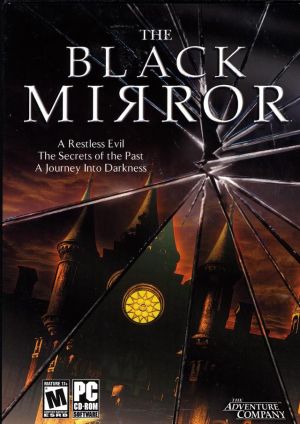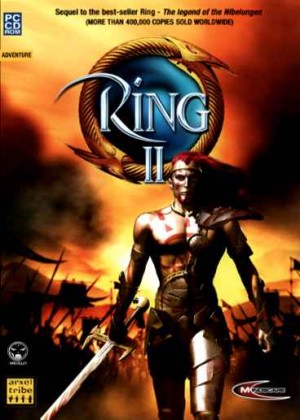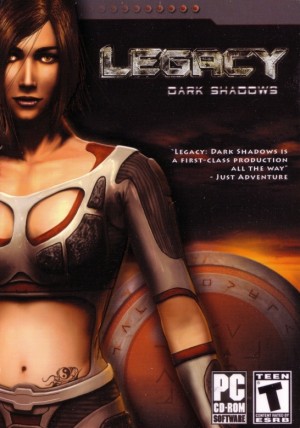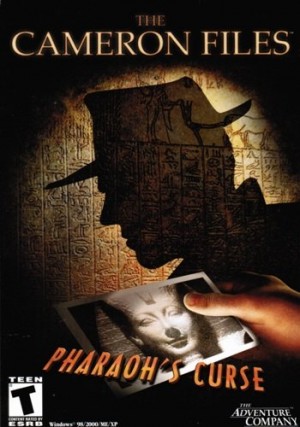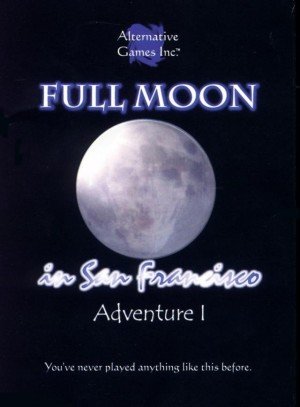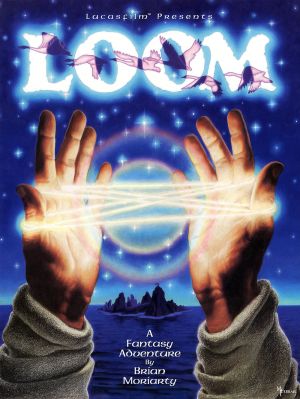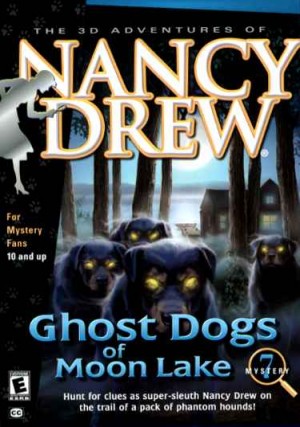Review for Police Quest: In Pursuit of the Death Angel
It is no great secret that I am an absolute nut for nostalgia. In this crazy world of 1080p and six-channel surround sound, there's a warm innocence in the games of days gone by--and an even warmer naïvete in the way those games were perceived. Circa 1987, most games had no choice but to serve either as comedies or cartoons due to the inherent limitations of the technology. The "serious game" really hadn't taken root yet. Sierra On-Line, basking in the great success of their light-hearted King's Quest fairy tales and the outrageous comedy of Space Quest and Leisure Suit Larry, decided it was time to give serious a try with a police adventure. Ken Williams wasted no time in recruiting Officer James Walls, recently retired from the California Highway Patrol after a traumatic shooting incident which provided the sort of dramatic background adventures were in short supply of, and thus was born the first "realistic adventure" to come to the mainstream.
It's not as though Police Quest: In Pursuit of the Death Angel (hereafter PQ1) was the first game ever grounded in realism, but you might think so based on the back of the box, which promises "real-life dramas" and "unflinching situations" and claims to be a "factual account." The in-game computer is "realistic" and even the map of the fictional in-game city is praised as "authentic." I'm not sure how authentic a map of a fictional city can really be, but that's what I get for overanalyzing.
PQ1 puts you in the shoes of Officer Sonny Bonds, a simple traffic patrolman starting a normal day on traffic patrol. After investigating the scene of a drive-by shooting, you will soon find yourself in the middle of a dangerous drug and gambling ring, eventually going undercover to infiltrate the deepest levels of the Death Angel's gang.
In its original 1987 form, PQ1 was the sixth Quest game from Sierra and boasts the standard AGI-based parser system. Character movement takes place with the arrow keys or the number pad, which allows for diagonal movement or stopping. All commands are typed and action does not stop while you are typing your commands, which often increases the tension in a game with many time-sensitive sequences. There is no mouse support whatsoever, as was standard in an era where mice were hardly standard with computers.
The story is effectively constructed over the course of what is portrayed as one very long day (which is a pretty ludicrous notion considering the changes that take place during the game; thankfully future games in the series would acknowledge their multi-day timespans) and labors to ensure the player engages in the trivialities that a normal traffic officer would endure. As such, the game will find you taking showers, changing your clothes often, individually taking all the important police-type items from your locker, attending briefings, and even doing the standard four-wheel safety check every time you leave the parking lot while on duty. In true early-Sierra unforgiveness, if you missed so much as a wheel while walking around, your car will break down a block away--hope you saved your game!
Those who would rather play through a story than spend hours on inventory combination puzzles will love PQ1--it may be the easiest mainstream adventure game ever made. At every moment of the game, your immediate goal is very obvious (80% of the time, this involves going where the radio dispatcher tells you to go or dealing with the obvious traffic violation that just took place in front of you). This is in sharp contrast to the early King's Quest games, which featured wide-open worlds and single-layer stories with an almost frustrating lack of direction. The story of PQ1 is built in small pieces, from vehicle collision to traffic stop to citizen complaint, eventually leading to detective duty and a nifty undercover assignment into the lair of the Death Angel.
Throughout the adventure, a total lack of interesting puzzles persists; the only difficult sequences involve following the procedures lined out in the accompanying manual to the letter, and sometimes very quickly. A violation of policy gets you either suspended or killed, both outcomes bringing the game to a halt. Other than these elements, you shouldn't have any trouble with the game until you get to the ugly part: the poker table. The endgame involves not one, but two lengthy five card draw games (ah, those were the days, when five card draw was actually a viable poker game), and you do not have the option to skip the games in the original EGA version. However, you can save the game between hands, so through some healthy saving and restoring you should get through the games fairly quickly. The 1992 VGA re-release allows you to skip both of the games (and miss out on the 15 points each for winning), but should you choose to play you will not have the option to save or restore between hands. Both poker sequences go on much longer than they should considering the decent intelligence of the computer opponents, and this infamous design choice is another egregious example of early Sierra's disturbing reliance on mini-games.
Once the adventure is complete, however, the story is wrapped up tidily with a lengthy ending sequence that is adequately rewarding, and also sets the stage for the second game in the series, which was already complete in story form by the time PQ1 was released. The ending wraps up a very enjoyable and nostalgic experience, one where the story is interesting, the puzzles are easy, the parser is intelligent, and the dialogue is schlocky '80s trash talk at its finest (isn't it a shame that "slimeball" is no longer in our mainstream lexicon?).
The re-release in 1992 brought high-quality VGA graphics and a much more extensive, and believable, dialogue script. However, it also brought its share of problems. Jim Walls had issues with other Sierra personnel and was long gone before this remake was even begun. One can only assume that Tammy Dargan, the main design force behind both the remake and Police Quest 4, was determined to change many of the original game's elements which she disliked--with the intention, it is believed, that Police Quest 2 would later be remade in VGA format as well. Sierra's entire line of 1992 VGA remakes proved to be less successful than hoped, however, and thus we have a VGA remake of PQ1 with a frustrating amount of inconsistent elements to the first and only version of PQ2. The names (and genders) of main characters are changed, important story elements are modified, and the ending is almost totally stripped out. The remake also contains a number of obvious logic gaps and glitches, gratuitous in-jokes, and a rather convoluted driving interface (though the driving sequence does give us one of the most classic MIDI-era background tracks). The game itself is more fun with the SCI interface, much prettier to look at, and certainly more interesting and believable to read--but it makes its share of mistakes and is annoyingly unfaithful to the original version. Those pros and cons would lead me to assign the remake the same 3.5 score as the original.
I would strongly recommend playing the original PQ1 first and then playing the next two sequels before returning to the remake. Unfortunately, the recent Vivendi Police Quest Collection leaves the original EGA version off, and so you won't even have the choice. In any case, despite the flaws, Police Quest: In Pursuit of the Death Angel remains an adventure game standard that is a must-play for both those who enjoy procedural adventures, and those who want to understand better the roots of the genre.
By the way, the story of PQ1 being used as actual law enforcement training is not an urban legend; in October of 1988, Law and Order (an industry magazine still published today) devoted its "Product Spotlight" column to the game, with the immortal quote "Why, you ask, is a computer game being used in a serious law enforcement publication? Because Police Quest is a serious training program." The article goes on to state that the game documentation is "more difficult than the disk/video training materials we use on our computer system" and observes that as a result of the game, "squad room conversation between officers was now less concerned with fishing and more oriented toward discussing proper procedures." Almost twenty years now since its release, the game looks cheesy, outdated, and about as unrealistic as a dramatic adventure could be. But looking at it through the perspective of the past, it was a surprising new depth of story, dialogue, and character for computer games in general, and law enforcement professionals were entranced by the training potentials that a game like this held. Truly, those were simpler times...


